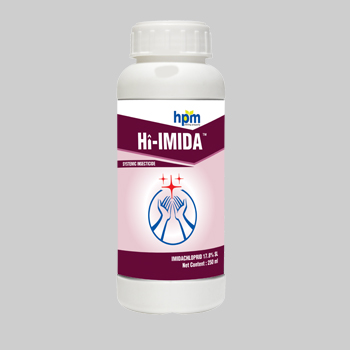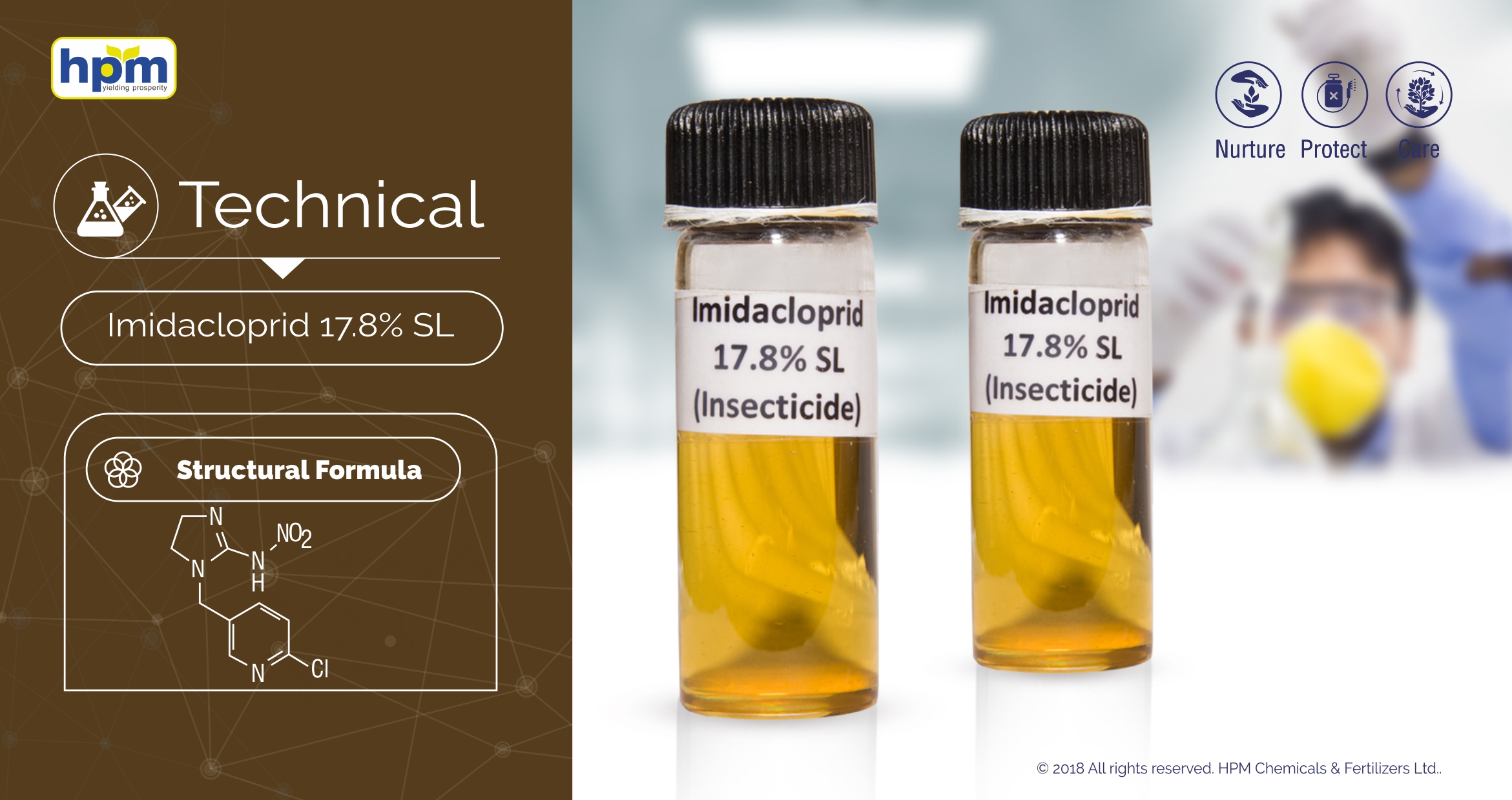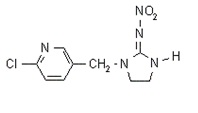- HOME
- ABOUT
- INFRA
- BUSINESS AREA
- KNOWLEDGE
- CSR
- Policy & Committe
- Activities
- Plantation Drive(Samba)
- Green Nation Clean Nation Plantation Drive
- Santosh Krishi Diwas
- 14 TH SENIOR ROLL BALL NATIONAL CHAMPIONSHIP
- Arm Wrestling Championship
- Clothes Distribution for Students
- Samuhik Vivah Bhiwadi
- Help him to Breathe
- WHEELCHAIR DISTRIBUTION KHUSHKHERA
- Girl's Adoption CSR
- Save Eyes Save Life
- CAREERS & HR
- NEWS
- CONTACT
- BLOG
QUESTIONS? CALL: 011-4507 1800

Stands for delivering best service and exceptional quality for crop protection.
Tel. (911) 45071800-899
Email: info@hpmindia.com
HPM Chemicals & Fertilizers Ltd.
209-210, Anupam Bhawan, Azadpur Commercial Complex Azadpur, Delhi-110033
HI-IMIDA (Imidacloprid 17.8% SL)
Benefits of HI-IMIDA
- Unique modern and sure shot insecticide based on Imidacloprid a chlornicotinyl insecticide(CNI).
- It is a multiple usage insecticide used to control insect pests of cotton, paddy, sugarcane and vegetables.
- It is used as foliar spray for the control of sucking and other insects in different crops.
- Imidacloprid has a broad spectrum of activity, particularly against sucking insects, various species of beetles, some species of flies and leaf miners. There fields of use are termite and locust control.
- Its outstanding biological efficacy, especially its excellent root-systemic properties, its broad spectrum of activity, good long lasting effect - combined with low application rates and good plant compatibility, has made the product the first choice of th farmer.
- It can be applied to plants as a spray or stem paint or as a basal stem spray/drench.
- It can also be injected into plants or applied as a soil treatment use.
- The part of active ingredient taken up by the plant is further distributed in an acropetally direction.
HI-IMIDA - Imidacloprid 17.8 SL mode of action - Systemic
HI-IMIDA - Imidacloprid 17.8 SL dosage for Cotton - 40-50ml/acre
HI-IMIDA - Imidacloprid 17.8 SL dosage for Paddy - 40-50ml/acre
HI-IMIDA - Imidacloprid 17.8 SL dosage for Chilli - 50-100ml/acre
HI-IMIDA - Imidacloprid 17.8 SL dosage for Sugarcane - 140ml/acre
HI-IMIDA - Imidacloprid 17.8 SL dosage for Mango - 2-4ml/tree
HI-IMIDA - Imidacloprid 17.8 SL price - Contact our representative for the Latest Prices
HI-IMIDA - Imidacloprid 17.8 SL trade name - HI-IMIDA
HPM India is one of the best Imidacloprid 17.8 SL manufacturers in India, Contact us now.

IMIDACLOPRID

Hi-Imida from HPM India
| Product Name |
: |
Imidacloprid | |||||
| Type of pesticides |
: |
Insecticide | |||||
| Chemical name |
: |
1-[(6-chloro-3-pyridinyl)methyl]-N-nitro-2-imidazolidinimine | |||||
| Empirical Formula |
: |
C9H10CIN2O2 |
|||||
| CAS No. |
: |
[138261-41-3] | |||||
| UN No |
: |
2588 | |||||
| Packing group |
: |
III | |||||
| IMDG |
: |
Class.6.1 [Pesticides, solid, toxic n.o.c. (Imidacloprid)] | |||||
| Shelf-life |
: |
Two years under normal storage conditions. | |||||
|
DESCRIPTION |
|||||||
| Imidacloprid is an antagonist by binding to postsynaptic nicotinic receptors in the insect central nervous system. | |||||||
|
MODE OF ACTION |
|||||||
| Systemic insecticide with translaminar activity and with contact and stomach action. Readily taken up by the plant and further distributed acropetally, with good root-systemic action. | |||||||
|
APPLICATIONS It is a multiple usage insecticide used to control insect pests of cotton, paddy, sugarcane and vegetables. It is used as foliar spray for the control of sucking and other insects in different crops.. Imidacloprid has a broad spectrum of activity, particularly against sucking insects, various species of beetles, some species of flies and leaf miners. There fields of use are termite and locust control Its outstanding biological efficacy, especially its excellent root-systemic properties, its broad spectrum of activity, good long lasting effect - combined with low application rates and good plant compatibility, has made the product the first choice of the farmer. It can be applied to plants as a spray or stem paint or as a basal stem spray/drench. It can also be injected into plants or applied as a soil treatment use. The part of active ingredient taken up by the plant is further distributed in an acropetally direction. |
|||||||
| Structure Formula |
: |

|
|||||
| Physical properties | |||||||
| Appearance |
: |
Colourless crystal | |||||
| Imidacloprid content, percent by mass |
|
94% Min. | |||||
| Acidity (as H2SO4) % by mass (max) |
: |
0.5% Max. | |||||
| Moisture Content |
: |
1.0% Max. | |||||
| Compatibility |
: |
Incompatible with oxidation materials and acids. | |||||
| TOXICITY DATA | |||||||
| Mammalian Toxicity |
: |
WHO (a.i.) II; Moderately hazardous | |||||
| Environmental Toxicity |
: |
Imidacloprid is highly toxic to four bird species: Japanese quail, house sparrow, canary, and pigeon.In bobwhite quail (Colinus virginianus), Imidacloprid was determined to be moderately toxic.Imidacloprid is highly toxic on an acute basis to aquatic invertebrates, harmful to honeybees by direct contact, but no problems expected when sprayed into flowering crop or when used as seed treatment.it is slightly toxic for warms.Imidacloprid is rately toxic and is linked to neurotoxic, reproductive and mutagenic effects. It has been found to be highly toxic to bees and other beneficial insects. It is also toxic to upland game birds, is generally persistent in soils and can leach to groundwater. | |||||
| Formulation |
: |
17.8% SL | |||||
| Trade name |
: |
HI - IMIDA | |||||
| Packing detail |
: |
10ml, 50ml, 100ml, 250ml, 500ml, 1ltr | |||||
| Recommendations | |||||||
| Crop | Common name of the Pest | Dosage/acre(gm) | Dilution in Water (Liter) |
Waiting
Period
(days |
|||
| Cotton | Aphid, Whitefly, Jassid Thrips | 40–50 | 200–280 | 40 | |||
| Paddy | BPH,WBPH, GLH | 40–50 | 200–280 | 40 | |||
|
Chilly
|
Jassid,Aphid, Thrips | 50-100 | 200-280 | 40 | |||
|
Sugarcane
|
Termite | 140 | 750 | 45 | |||
|
Mango
|
Hopper | 2-4ml/tree | 10litre | 45 | |||
| Name | Details |
|---|---|
| UID | HPM2000K088 |
| Brand Name | HI-IMIDA |
| Technical Name | Imidachloprid 17.8% SL |
| Packing Details | 1 Ltr, 500 ml, 250 ml, 100 ml 50 ml, 10 ml. |
| Registration No | 38090/(219)/2002-Imidachloprid (SL)-94 |
| Toxicity Symbol |  |







